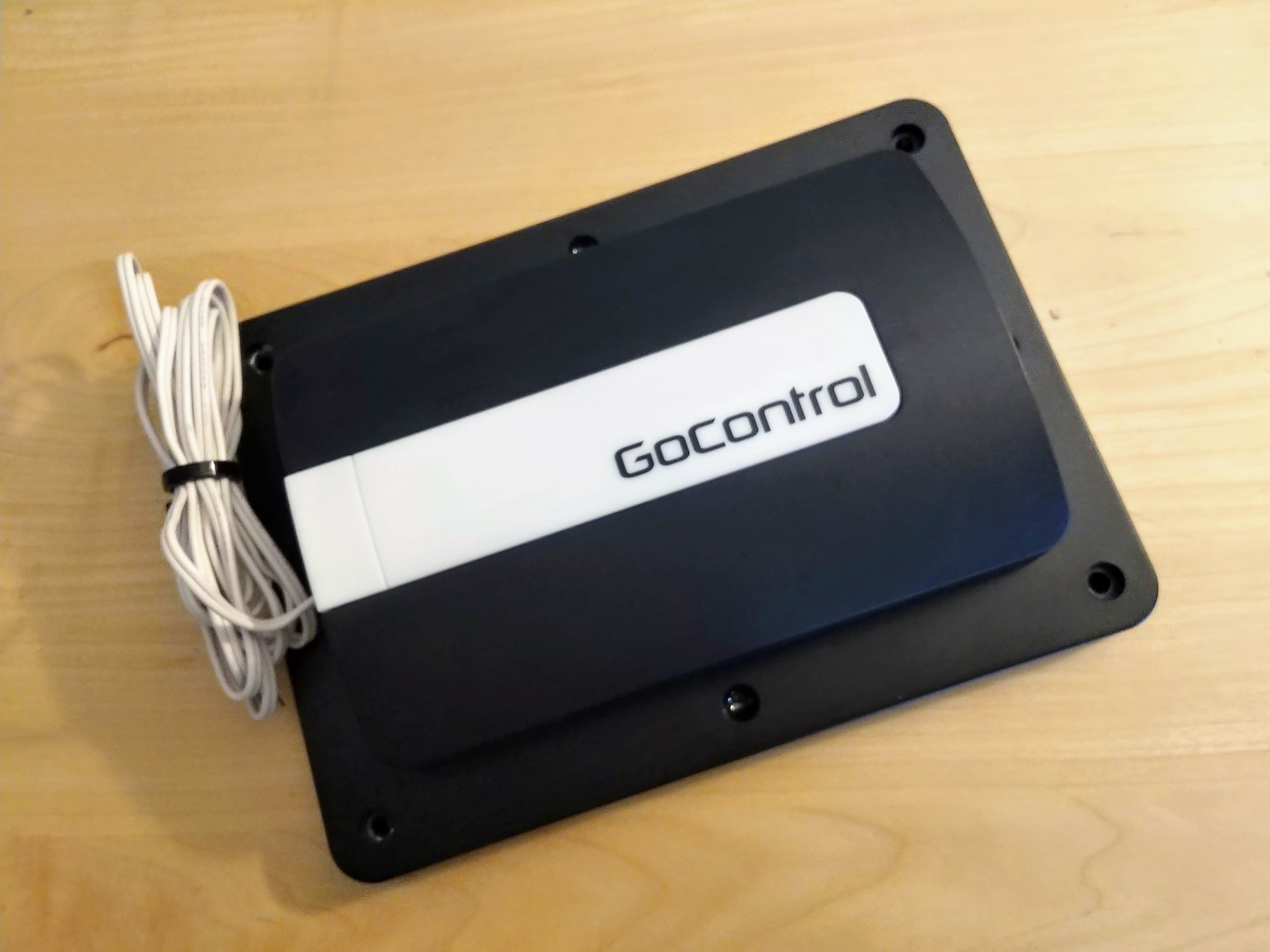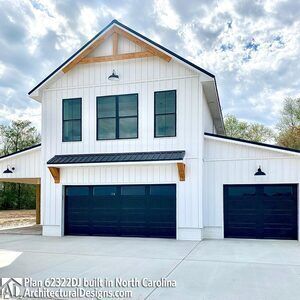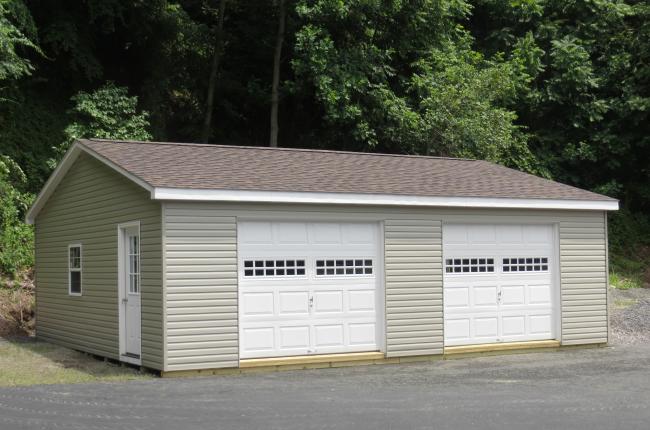
Oversized garage plans can be a great way to add extra storage and parking space for vehicles or other items. These plans are ideal for those who love gardening and car repairs, as well as other activities that need extra space.
Some plans feature double door garage designs that are designed for a standard two-car vehicle, while others have a more modern look and feature a single garage door. Your home's overall design will determine which style you choose.
Consider the dimensions of your cars, and the doors you'll need. This will allow you to determine the most suitable width for your garage as well as the overall dimensions of the building.
When building the front wall, remember to consider the garage's width. A garage that's too narrow can be difficult to open, especially for cars that are larger than most.

A single garage door can fit in a wide space, but a full-size SUV or van, as well as an oversized truck, will not fit in an opening that is too narrow.
You should also consider the height of your garage door. A garage that's higher than the average width will be more difficult to open, but it will require more space inside the garage.
There are a variety of styles that are available for oversized garage plans, from drive-thru designs to plans with bays that can accommodate RVs or boats. Garages can be equipped with a shed and carport or have loft space.
Oversized garage plans that include a living space are a great way to expand your property's living area and give you a place to relax. These plans often have a full kitchen and livingroom, and some include a primary bedroom or guest space on the top floor.
These garage plans may be built with a steel roof or wood frame depending on the style of your house. You can customize these garage plans to meet your needs by adding extra features or amenities.

A garage with a high ceiling and lots of windows can make it easier to work on projects in the shop. Alternatively, you could use the space to create an art studio or hobby space.
If you're looking for a unique approach to oversized garage plans, try a barndominium-inspired building. This plan is reminiscent of classic barn-style architecture. It features a heated shop area at the main level and a loft that provides more than 600 sq. feet of workspace.
For those with a lot to store or who wish to build a workshop, large garage plans are ideal. These plans can store vehicles as well tools, lawn and gardening equipment, recycling bins, or other items.
FAQ
What are the main components of a full kitchen renovation?
A complete kitchen remodel is more than just installing a new sink or faucet. There are also cabinets, countertops, appliances, lighting fixtures, flooring, plumbing fixtures, and much more.
Full kitchen remodeling allows homeowners to make small changes to their kitchens. The contractor and homeowner will be able to do the job without any demolition, which makes the project much easier.
There are many services that can be done to your kitchen, including plumbing, electrical, HVAC, painting, and carpentry. A complete kitchen remodeling project may require multiple contractors depending on the size of the job.
Professionals with years of experience working together are the best way ensure a successful kitchen remodel. Many moving parts can cause delays in kitchen remodels. You should plan ahead and prepare a backup plan for any unexpected situations if you decide to DIY.
What is the cost of completely renovating a kitchen?
You might wonder how much it would be to remodel your home if you have been considering the idea.
The average kitchen remodel costs between $10,000 and $15,000. There are ways to save on your kitchen remodel while still improving the space's look and feel.
You can cut down on costs by planning ahead. This includes choosing a design style and color palette that fits your lifestyle and budget.
A skilled contractor is another way to reduce costs. A tradesman who is experienced in the field will be able to guide you through each stage of the process.
It is best to decide whether you want to replace your appliances or keep them. A kitchen remodel can add thousands to the cost by replacing appliances.
In addition, you might decide to buy used appliances instead of new ones. Buying used appliances can help you save money because you won't have to pay for installation.
It is possible to save money when you shop around for materials, fixtures, and other items. Many stores offer discounts on special occasions such as Cyber Monday and Black Friday.
Are there any savings on a remodel of a bathroom or kitchen.
Remodeling a kitchen or bathroom is a costly undertaking. However, when you consider how much money you pay each month for energy bills, upgrading your home might make more sense.
It is possible to save thousands every year with a simple upgrade. Simple changes such as insulation in ceilings and walls can help reduce cooling and heating costs by up to 30%. Even a simple addition can increase comfort and reduce resale costs.
The most important thing to keep in mind when planning for renovations is to choose products that are durable and easy to maintain. Materials like porcelain tile, solid wood flooring, and stainless-steel appliances will last longer and need fewer repairs than vinyl countertops.
You might also find that replacing old fixtures by newer models can reduce utility expenses. Installing low-flow faucets or showerheads can cut water use by up to 50%. You can reduce your electricity consumption by replacing inefficient lighting bulbs with compact fluorescent lights.
What are some of the largest costs associated with remodeling your kitchen?
Planning a kitchen renovation can be costly. These include demolition, design fees, permits, materials, contractors, etc. Although these costs may seem relatively small, if you take them all together, they can quickly add up. They quickly grow when added together.
Demolition is usually the most expensive. This involves removing old cabinets, appliances and countertops as well as flooring. Then you have to remove the drywall and insulation. You will then need to replace them with new items.
The next step is to hire an architect to design the space. To ensure your project is compliant with building codes, you will need to pay permits. After that, you have to find someone to do the actual construction.
Once the job has been finished, you need to pay the contractor. The job size will determine how much you spend. Before hiring a contractor, it is vital to get estimates from multiple people.
If you plan, you can often avoid some of these costs. You might be able negotiate better materials prices or skip some work. It is possible to save money and time by knowing what to do.
Many people install their cabinets by themselves. They think this will save money because they don't have to pay for professional installation services. They often spend more trying to install cabinets themselves. A professional can usually complete a job in half of the time that it would take you.
A cheaper way to save money is buying unfinished materials. You must wait until the cabinets are fully assembled before purchasing pre-finished material. You can immediately use unfinished materials if you purchase them. And if something doesn't turn out exactly as planned, you can always change your mind later.
But sometimes, it isn't worth going through all this hassle. Planning is the best way save money on home improvement projects.
What is the difference in a remodel and a renovaton?
A remodel is major renovation to a room, or a portion of a rooms. A renovation is a minor change to a room or a part of a room. A bathroom remodel, for example, is a major undertaking, while a new sink faucet is minor.
Remodeling involves the complete or partial renovation of a room. A renovation is only changing something about a room or a part. A kitchen remodel might include the replacement of countertops, sinks as well as appliances, lighting, and other accessories. You could also update your kitchen by painting the walls, or installing new light fixtures.
How much would it be to renovate a house vs. what it would cost you to build one from scratch?
The process of gutting a house involves removing all contents inside the building. This includes walls, floors and ceilings, plumbing, electrical wiring and appliances. This is usually done when you are moving into a new home and need to make some adjustments before you move in. It is often very costly to gut a home because of all the work involved. Depending on the job, the average cost of gutting a home is between $10,000 and $20,000
Building a home means that a builder constructs a house piece by piece, then adds windows, doors, cabinets and countertops to it. This usually happens after you have purchased lots of lands. Building a home usually costs less than gutting and can cost between $15,000 and $30,000.
It all depends on what you plan to do with your space. If you are looking to renovate a home, it will likely cost you more as you will be starting from scratch. You don't need to take everything apart or redo everything if you are building a home. You can design it yourself, rather than waiting for someone else.
Statistics
- Following the effects of COVID-19, homeowners spent 48% less on their renovation costs than before the pandemic 1 2 (rocketmortgage.com)
- About 33 percent of people report renovating their primary bedroom to increase livability and overall function. (rocketmortgage.com)
- According to a survey of renovations in the top 50 U.S. metro cities by Houzz, people spend $15,000 on average per renovation project. (rocketmortgage.com)
- Windows 3 – 4% Patio or backyard 2 – 5% (rocketmortgage.com)
- $320,976Additional home value: $152,996Return on investment: 48%Mid-range average cost: $156,741Additional home value: $85,672Return on investment: (rocketmortgage.com)
External Links
How To
How to Install Porch Flooring
While installing porch flooring is straightforward, it takes some planning. Before installing porch flooring, you should lay a concrete slab. You can also lay a plywood deckboard if you don't have access to concrete slabs. This allows you to install your porch flooring without spending a lot of money on a concrete slab.
Before installing porch flooring, you must secure the plywood as the subfloor. To do this, you must measure the width of the porch and cut two strips of wood equal to the porch's width. These should be placed on both sides of your porch. Next, nail them down and attach them to your walls.
You must prepare the area in which you plan to place the porch flooring after you secure the subfloor. This is usually done by cutting the top layers of the floorboards down to the appropriate size. Finish the porch flooring by applying a finish. A polyurethane finish is common. It is possible to stain porch flooring. Staining is more straightforward than applying a coat of clear paint. After applying the final coat, you just need to sand down the stained areas.
Once you have completed these tasks, you can finally install the porch flooring. Begin by marking the location for porch flooring. Next, cut the porch flooring according to your measurements. Then, fix the porch flooring to its place using nails.
If you need to give your porch more stability, porch stairs can be installed. Porch stairs, like porch flooring are usually made of hardwood. Some people like to install their porch stairs before they install their porch flooring.
Once your porch flooring is installed, it is time for the final touches. You will first need to remove the porch flooring, and then replace it with a brand new one. Next, clean up all debris. Make sure to clean up any dirt and dust around your home.